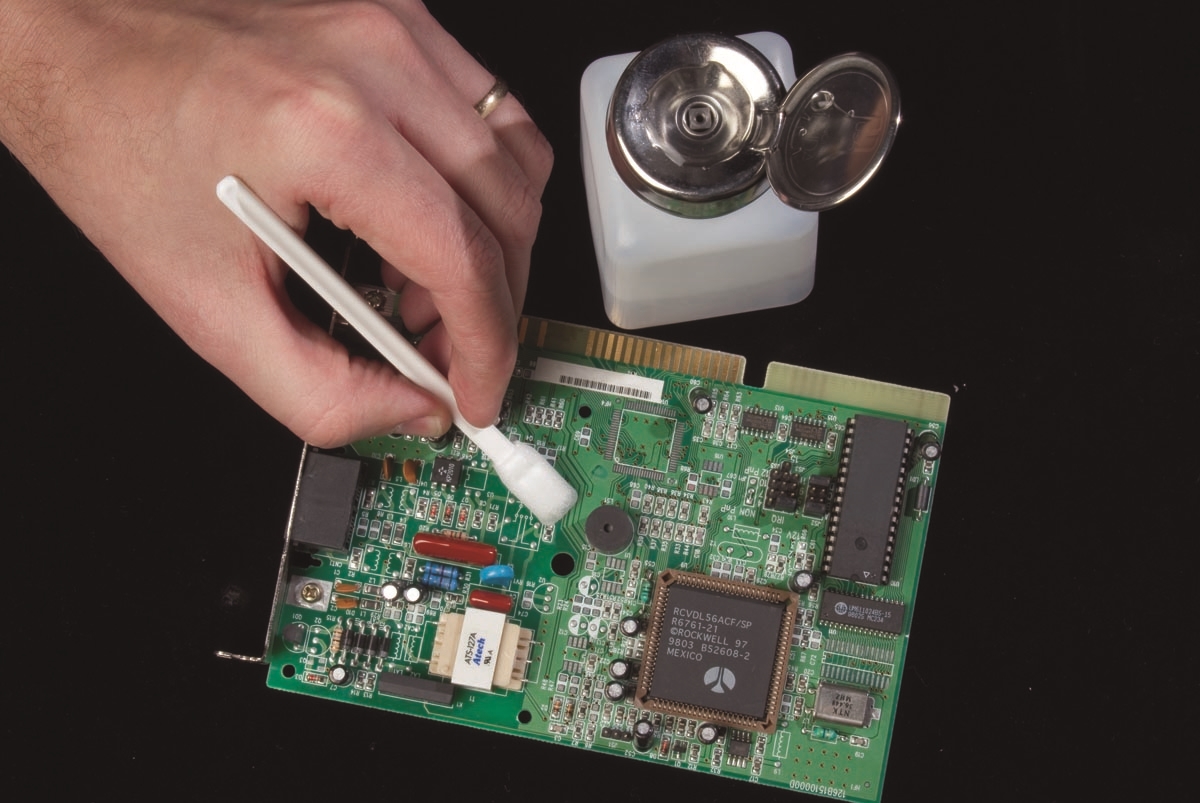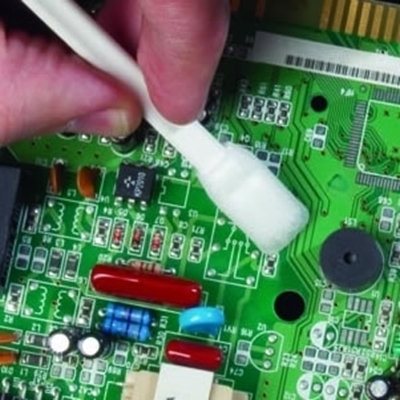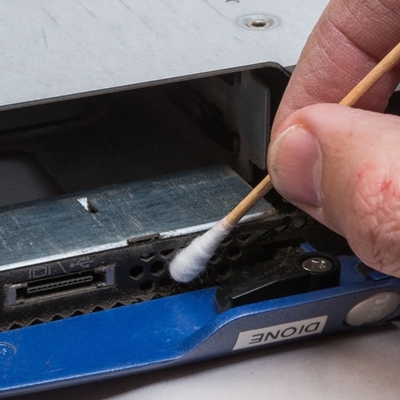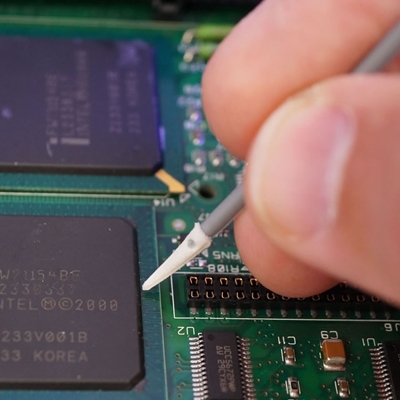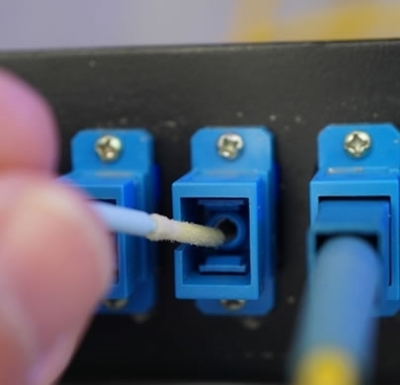This is a brief introduction to selecting a precision swab for use in laboratories, clean rooms, electronic assembly, rework, and repair of electronics. We’ll be speaking in generalities, but you may choose a swab for a specific reason or for a very specific job. Swabs can be used to apply materials, like adhesive or solvent, or to remove contaminants. First, let's discuss their use as removers, specifically by removing contamination or soil from delicate or precision parts.
The swabs generally are effective removal tools for three reasons. First, they can clean a small area rather than expose the whole device to the cleaning solvents. Second, swabs allow gentle scrubbing actions. Third, swabs excel at getting into tight crevices where other cleaning applicators can’t and pull that contamination out. Choosing the right swab matches the requirements at hand with the materials and geometries of the swab, in essence selecting the right tool for the job.
A swab is a basically a wipe on a stick. The properties that we want all swabs to have include absorbency, durability, and sterility. Absorbency because after all we do want the swab to remove any contaminants from the device we're trying to clean. We want it to be durable so that the solvent we're using doesn't damage the swab. And finally, sterile or clean as the swab can’t deposit any new contaminants. Additionally, the specific swab we select needs to fit the precise area or crevice that we're trying to clean.There are many materials used to make swab heads, but let's discuss the two most common head materials found in the precision cleaning environment. Cotton is very absorbent and, in many cases, a good cleaning choice. Cotton is tolerant of most cleaning solvents, however irregularities from being a naturally derived material do limit its usefulness. Unless carefully made and engineered, cotton swabs often shed fibers. Some cotton swabs are engineered to be very clean. For example, this swab can be used in many precision applications. It uses special cotton fibers that are wound very tightly.
The second common material used for precision swabs is a polyurethane foam. Polyurethane foams are absorbent and generally sterile, and it tolerates the most frequently used cleaning solvents, such as isopropyl alcohol. However, more aggressive cleaning solvents, such as acetone, will weaken the foam structure and may shed particles.
Swab handle material is often specified for stiffness and for chemical tolerance. Wooden handles provide good stiffness and good chemical tolerance, but much like cotton can be, wood as a natural material may not be as sterile as required for some applications.
As a result, engineered plastics are chosen most frequently for swab handles. Polymers and plastics can be engineered for many properties. A simple plastic like polypropylene has excellent chemical tolerance and can be specifically engineered to be stiffer or more flexible as required.
If you have any precision cleaning needs, contact us at 800-858-4043 and info@itwcce.com or check us out online at www.techspray.com and we'll be happy to discuss swabs with you and make a recommendation and get you the swab you need.

